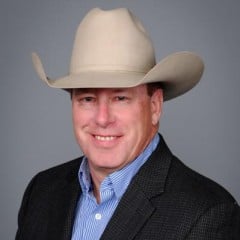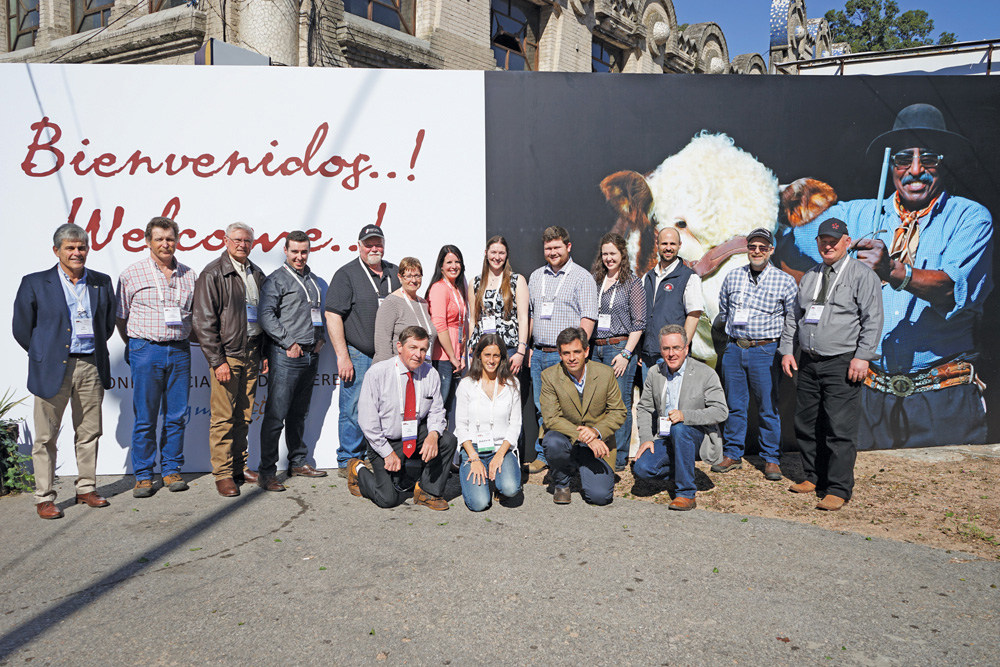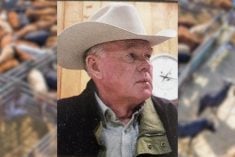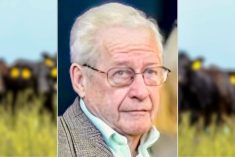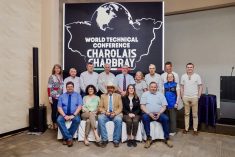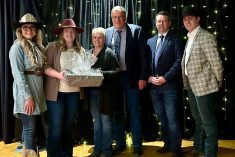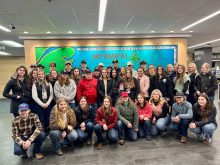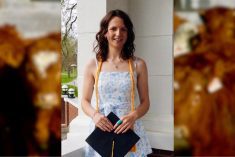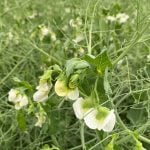As the World Angus Forum 2017 rapidly approaches less than a year from now, I had a chance to visit with Angela McGregor at the Canadian Angus Association’s annual meeting in Quebec City and find out about their farming operation and what’s in store for us at the upcoming forum. McGregor is part of the forum’s organizing committee as well as an Angus breeder herself. She and her partner Charles, along with family members William and Amy run Newcairnie Farms, a 200-head purebred Aberdeen Angus herd near Aberdeen in the northeast area of Scotland. This herd is run on 180 acres using rotational grazing. Generally 90 head is grazed on 20- to 25-acre paddocks and moved every two weeks. As well they harvest grass silage at eight to 12 tons/acre off of these same acres, which supports the fertility and abundant rainfall prevalent in the U.K.
Read Also
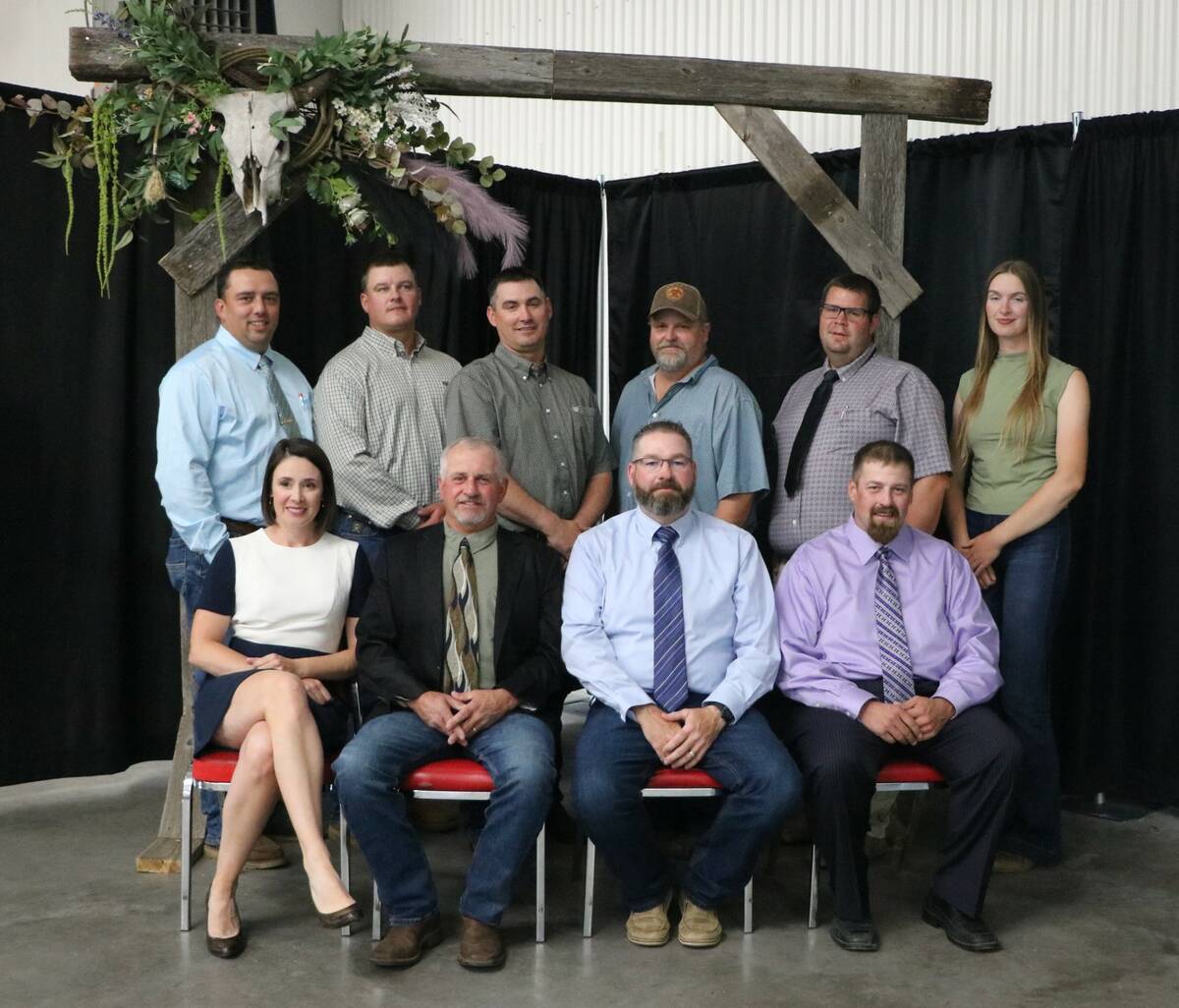
Purely Purebred: Outstanding Young Angus Breeder, Junior Limousin Herd Building Incentive winners and more
News from Canada’s purebred beef industry, including show results, board election results, research and more
What’s interesting is that the fat cattle sold, are sold as bulls or bullocks instead of castrated steers, as we do in Canada. All bulls are fed the same ration consisting of potatoes, barley and draff plus protein with the best bulls being selected as breeding stock at about one year of age. Draff would be our equivalent to dried distillers grain (DDG) as it’s made from residues of husks used in the fermentation of grain for brewing. All are weighed and scanned through Breedplan with the registered bulls also being DNA tested. Demand has been strong for Angus heifers from the U.K. into Europe including Germany, Estonia, Spain and Lithuania. Europe is looking at building their Angus herds to reduce the import of South American beef, working on becoming self-sufficient. They use moderate framed bulls to produce the cattle that works best for them in their environment and are excited about the genetic potential for newer Canadian genetics in the U.K.
Finding out from McGregor on how well Angus genetics work in Europe and U.K. is one of the reasons World Angus Forum 2017 is being held in the United Kingdom. The theme is “From Consumption to Consumer” and the aim is to bring some of the most progressive minds and leaders in farming and cattle breeding together to challenge and build a sustainable future for generations to come, while looking at the entire supply chain. Besides learning and networking, there will be plenty of tours in Ireland, England and Scotland, as part of Forum 2017.
You’ll be able to visit many prominent Angus herds including the Rosemead herd in England, Ballindaloch herd in Scotland and Gigginstown herd in Ireland as well as national cattle shows including the Royal Highland Show and much more. For all the Junior Angus members, there is a youth component with teams of four ranging from ages 18 to 25 competing from around the world in a week-long series of events finishing at Netherton/HW Angus on July 2. The dates are June 16-July 2, 2017.
The committee has been working hard on World Angus Forum 2017 and as Johnny Mackey, head of the Aberdeen Angus Cattle Society says, “The last time we hosted the Forum was 1977 and you don’t want to wait another 40 years to have World Angus Forum come home to the birthplace of the Angus breed, Scotland, and not be a part of it.” For more information, check out worldangusforum2017.com.
The Canadian Charolais Association held its 57th Annual General Meeting in Edmonton, at the Hilton Garden Inn West Edmonton on June 18 in conjunction with the Alberta Charolais Association’s Breeder Tour. It takes a village to host breeder tours and meetings and the outstanding support from the membership was much appreciated — everyone from babies to grandparents were in attendance from P.E.I. through to British Columbia. Many thanks to the ACA and to Johnson Charolais, Wrangler Charolais, KAY-R Charolais and Circle Cee for graciously receiving us at their operations.
The Canadian Charolais Association re-elected Brian Coughlin of Cobden, Ont., as its president and welcomed new board members Mathieu Palerme of Gatineau, Que., and Allan Marshall of Red Deer County, Alta., in place of retiring directors Bernard Begin of Ste-Marie, Que., and Rod McLeod of Rocky View County, Alta. The new board of directors are: Brian Coughlin, Cobden, Ont., president; Andre Steppler, Miami, Man., first vice-president; Darwin Rosso, Moose Jaw, Sask., second vice-president; Brent Saunders, Markdale, Ont., past president; Ricky Milton, Cornwall, P.E.I.; Mathieu Palerme, Gatineau, Que.; Mike Elder, Coronach, Sask.; Kasey Phillips, Waskatenau, Alta.; Travis Foot, Esther, Alta.; Allan Marshall, Red Deer County, Alta.

Michaela Chalmers of Oro-Medonte, Ont., has been selected the 2016 Robert C. McHaffie Junior Ambassador for the Canadian Angus Association (CAA). She is currently working toward an honors bachelor of science in animal biology at the University of Guelph, while remaining involved in her family’s operation, JPD Angus. She has served as president of the Ontario Junior Angus Association and is currently a director of the Canadian Junior Angus Association.


Other junior award winners announced at the CAA annual meeting in Quebec earlier in the year are Junior Stockman for the year, Maguire Blair of Drake, Sask., and 2016 Outstanding Young Angus Breeders Award winners, Ryan Currie of Bristol, Que. and Shawn Birmingham of Brandon, Man.

The Alberta Simmental Association (ASA) has named Rancier Farms as its 2016 Alberta Simmental Ambassador herd. Their operation consists of a black-based cow herd consisting of Black and Red purebred and percentage Simmental cows and a grain operation located at Killam in central Alberta.


Rodney and Sandra Sargent along with their son Chris, his wife Mandeja and their kids Telcan, Kylie and Iliza of Sargent Farms, is the ASA commercial breeder of the year. They run 400 Simmental X Charolais cows at Mirror, Alta., and have been using Simmental bulls for the past 20 years.
Generous donors bid heartily to raise $172,075 during the fifth annual Canadian Angus Foundation (CAF) “Building the Legacy” fundraiser auction during the Canadian Angus National Convention in Quebec City. Billy Estrada, president of the Mexican Angus Association, purchased two genetic lots. James Arnott of Coul Angus in Scotland purchased a needlepoint of the bull Canadian Colossal, handcrafted by former CEO Doug Fee’s wife Kathy. The highest selling item was the pick of the 2016-born heifer calves from Johnson Livestock of Peebles, Sask., purchased for $13,000 by Allandale Angus of Vermilion, Alta.

David Sibbald of Calgary became the president of the Canadian Angus Association at the group’s annual meeting. Tammi Ribey of Paisley, Ont., moves to past president and Brett Wildman of Sangudo, Alta., was elected president elect. Sibbald, his wife Mary Beth and sons Dylan and Adam operate SSS Red Angus, which was established in 1972. He is a fifth-generation rancher and also first vice-president of the Calgary Stampede.
Wildman is the third member of his family to serve on the Canadian Angus Association executive. His father David was president in 1990 and his brother Kirk held the same position in 2010. Brett owns and operates Wildman Livestock with his wife Traci and their daughter Paige in Sangudo, Alta.

In other news from the Canadian Angus Association’s 110th annual meeting, the breed established a New Generation Breeder Development program run by part-time director, Nathan Marin of Radville, Sask. The program is aimed at Canadian Angus members under 40 years of age or in their first five years of membership in the association.
CEO Rob Smith also launched a new business development team for the breed, which replaces the old field services structure. The business development team consists of Brian Good, senior director of business development B.C. and Alberta; Bob Toner, director of business development Saskatchewan and Manitoba; and Cheryl Hazenberg, director of business development, Eastern Canada. Good and Hazenberg are long-time CAA staff members and Toner is a new employee. As a group they will offer support to members with a focus on member recruitment and retention, and efficient member services, as well as co-operation with partners and industry.
Finally, the CAA announced its long-awaited Commercial Angus Identification and Performance Program. CAIPP is an initiative based on the Angus Tag program to provide pedigree and performance data to commercial producers to aid in making selection decisions and marketing their cattle. It enables producers to record pedigree and performance information on crossbred cattle and record feeder calf performance at the farm, feedlot, and packing plant. Producers will have access to parent verification, animal records, performance endorsements, a sire summary, and in-herd indexes of calves.
Tag users will also be able to record growth rates on the farm and in the feedlot, as well as carcass quality. CAIPP provides a linkage from the purebred breeder to the commercial cattlemen, feedlots and the packing plant.
For more info contact Taylor Isley at [email protected] or 1-888-571-3580.
The Canadian Simmental Association would like to remind breeders that the CSA has re-aligned their EPD’s with those of the American Simmental Association through a joint North American evaluation. Simmental EPDs are now directly comparable between countries. Check out www.simmental.com/resource for more information.
A delegation from the Canadian Hereford Association (see photo at top of page) attended the 17th World Hereford Conference held in Montevideo, Uruguay, April 18-25, 2016. The group included CHA executive director Stephen Scott, CHA president Daryl Kirton and CJHA president Cassandra Gorrill. Joining them were former CHA GM Gordon Stephenson and several producers from across Canada — Ellen and Bennet Crane from P.E.I., John Vancise from Ontario, Frances and Sherry Leachman from Saskatchewan, Jay Cross and Andy Schuepbach from Alberta, along with British Columbia breeders Trevor and Janice Tapp, Don and Leslie Richardson, and Phil and Catherine Brown.
Despite torrential rainfall (40 inches!) delegates were treated to Uruguayan hospitality and Hereford cattle during pre- and post-conference tours. The conference featured talks on genomics, feed efficiency and marketing.
The World Hereford Conference is held every four years in different host countries belonging to the World Hereford Council. These events are attended by Hereford cattle breeders from across the world, and provide a platform for the promotion of the Hereford breed.

